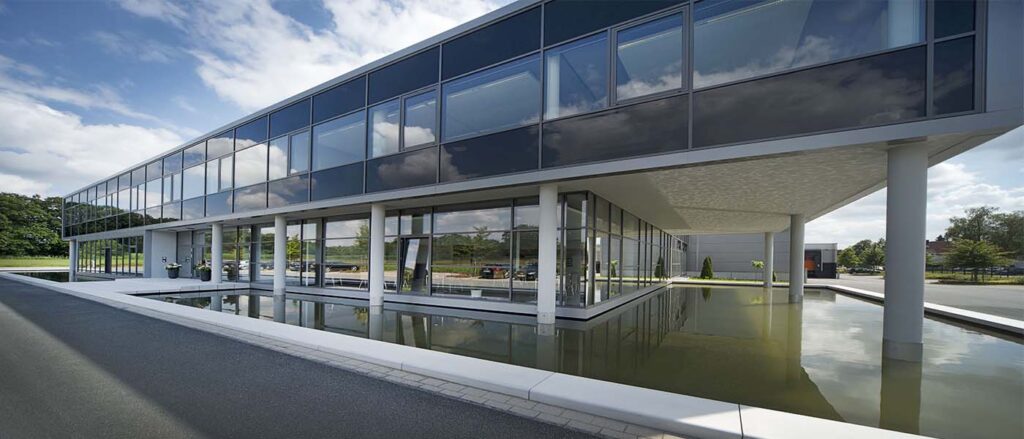
Service FAQ
Quickly find the right answer to frequently asked questions about our products
Service - FAQ

FAQ Frequently Asked Questions
Most wanted questions
here you can see the answers to the questions our customers are looking for most often.
Hot water (5)
In our installation instructions you will find a table with the values to be observed for fresh water. If the limit values are exceeded, our fresh water stations with full stainless steel heat exchangers should be used.
tubra® fresh water stations are well suited for use with heat pumps due to their heat exchanger with high thermal length. It should be noted, however, that the smaller the temperature difference between the storage tank and the potable water temperature, the larger the fresh water station should be selected.
- immediate hot water at the tapping point
- the growth of Legionella is prevented
- long distances between the fresh water station and the tapping point do not cause problems
By means of a volume flow sensor, the requested hot water volume flow is registered. The internal pump regulates the volume flow on the buffer side in such a way that a constant hot water temperature is achieved. In this process, the heat exchanger is flowed through in countercurrent principle.
In the download area of our website you will find, among other things, a planning support for the design of fresh water stations. Click here to get there.

FAQ Full Text Search
here you can search for your questions in all categories.
Hot water (11)
tubra® fresh water stations are well suited for use with heat pumps due to their heat exchanger with high thermal length. It should be noted, however, that the smaller the temperature difference between the storage tank and the potable water temperature, the larger the fresh water station should be selected.
In case of higher return temperatures due to circulation, the return stratification can stratify the heating water into the appropriate temperature ranges of the buffer tank by means of a 3-way valve, thus preventing mixing. This increases the efficiency of the heat generators.
By means of a volume flow sensor, the requested hot water volume flow is registered. The internal pump regulates the volume flow on the buffer side in such a way that a constant hot water temperature is achieved. In this process, the heat exchanger is flowed through in countercurrent principle.
Circulation balancing can take more than 10 minutes depending on the size of the building and the pipe network.
In the download area of our website you will find, among other things, a planning support for the design of fresh water stations. Click here to get there.
Fresh water stations heat drinking water according to demand. Hot water is produced only when it is needed. In addition, fresh water stations achieve very low return temperatures and thus increase the efficiency of the overall system.
- immediate hot water at the tapping point
- the growth of Legionella is prevented
- long distances between the fresh water station and the tapping point do not cause problems
A cascade is the parallel connection of several individual stations.
Due to the cascade design, the outputs of several stations can be added together. In this way, greater tapping capacities can be achieved. The hot water flow rate of a cascade can be controlled more precisely. The next station is only added when required. Maintenance work can be carried out more easily – even without interrupting the potable water heating.
In our installation instructions you will find a table with the values to be observed for fresh water. If the limit values are exceeded, our fresh water stations with full stainless steel heat exchangers should be used.
Before starting the circulation balancing, the circulation line must be completely vented. No more “air noises” should be perceived, e.g. at the pump. If circulation balancing has been started, no tapping may be carried out in the drinking water network concerned during the time when balancing is in progress. The flow rate must be set in such a way that the temperature spread is 5 K (e.g. 60 °C hot water temperature and 55 °C circulation return temperature).
Bacterial growth is supported by hot water that is kept warm in a drinking water tank over a longer period of time. In contrast, a fresh water station, which heats the drinking water in a continuous flow principle, is much more hygienic.
Latest FAQs
Hot water (5)
In our installation instructions you will find a table with the values to be observed for fresh water. If the limit values are exceeded, our fresh water stations with full stainless steel heat exchangers should be used.
Fresh water stations heat drinking water according to demand. Hot water is produced only when it is needed. In addition, fresh water stations achieve very low return temperatures and thus increase the efficiency of the overall system.
By means of a volume flow sensor, the requested hot water volume flow is registered. The internal pump regulates the volume flow on the buffer side in such a way that a constant hot water temperature is achieved. In this process, the heat exchanger is flowed through in countercurrent principle.
tubra® fresh water stations are well suited for use with heat pumps due to their heat exchanger with high thermal length. It should be noted, however, that the smaller the temperature difference between the storage tank and the potable water temperature, the larger the fresh water station should be selected.
In the download area of our website you will find, among other things, a planning support for the design of fresh water stations. Click here to get there.
Popular FAQs
Hot water (5)
In our installation instructions you will find a table with the values to be observed for fresh water. If the limit values are exceeded, our fresh water stations with full stainless steel heat exchangers should be used.
tubra® fresh water stations are well suited for use with heat pumps due to their heat exchanger with high thermal length. It should be noted, however, that the smaller the temperature difference between the storage tank and the potable water temperature, the larger the fresh water station should be selected.
- immediate hot water at the tapping point
- the growth of Legionella is prevented
- long distances between the fresh water station and the tapping point do not cause problems
By means of a volume flow sensor, the requested hot water volume flow is registered. The internal pump regulates the volume flow on the buffer side in such a way that a constant hot water temperature is achieved. In this process, the heat exchanger is flowed through in countercurrent principle.
In the download area of our website you will find, among other things, a planning support for the design of fresh water stations. Click here to get there.
UFAQ’s category list
Hot water (11)
tubra® fresh water stations are well suited for use with heat pumps due to their heat exchanger with high thermal length. It should be noted, however, that the smaller the temperature difference between the storage tank and the potable water temperature, the larger the fresh water station should be selected.
In case of higher return temperatures due to circulation, the return stratification can stratify the heating water into the appropriate temperature ranges of the buffer tank by means of a 3-way valve, thus preventing mixing. This increases the efficiency of the heat generators.
By means of a volume flow sensor, the requested hot water volume flow is registered. The internal pump regulates the volume flow on the buffer side in such a way that a constant hot water temperature is achieved. In this process, the heat exchanger is flowed through in countercurrent principle.
Circulation balancing can take more than 10 minutes depending on the size of the building and the pipe network.
In the download area of our website you will find, among other things, a planning support for the design of fresh water stations. Click here to get there.
Fresh water stations heat drinking water according to demand. Hot water is produced only when it is needed. In addition, fresh water stations achieve very low return temperatures and thus increase the efficiency of the overall system.
- immediate hot water at the tapping point
- the growth of Legionella is prevented
- long distances between the fresh water station and the tapping point do not cause problems
A cascade is the parallel connection of several individual stations.
Due to the cascade design, the outputs of several stations can be added together. In this way, greater tapping capacities can be achieved. The hot water flow rate of a cascade can be controlled more precisely. The next station is only added when required. Maintenance work can be carried out more easily – even without interrupting the potable water heating.
In our installation instructions you will find a table with the values to be observed for fresh water. If the limit values are exceeded, our fresh water stations with full stainless steel heat exchangers should be used.
Before starting the circulation balancing, the circulation line must be completely vented. No more “air noises” should be perceived, e.g. at the pump. If circulation balancing has been started, no tapping may be carried out in the drinking water network concerned during the time when balancing is in progress. The flow rate must be set in such a way that the temperature spread is 5 K (e.g. 60 °C hot water temperature and 55 °C circulation return temperature).
Bacterial growth is supported by hot water that is kept warm in a drinking water tank over a longer period of time. In contrast, a fresh water station, which heats the drinking water in a continuous flow principle, is much more hygienic.
FAQs without area hot water
